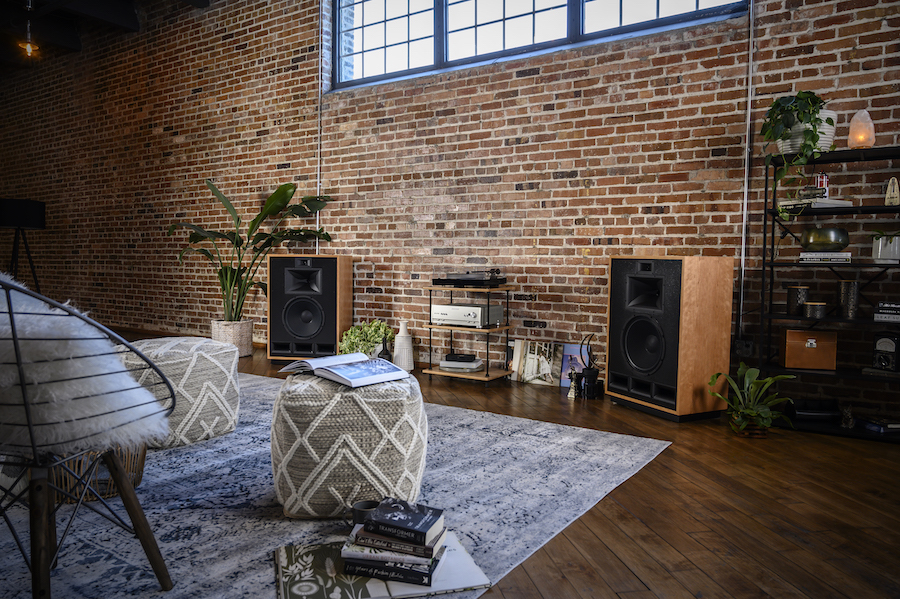3 Ways to Improve the Sound of High-End Audio Speakers
And Only One Involves Money

Audio enthusiasts come in many stripes. Some are continually upgrading every part of their sound system, looking for their ultimate dream setup that sounds "perfect." Others enjoy rotating equipment in and out of their system, looking for a tweak or two to improve sound quality or give it a different nuance. Many simply enjoy the audio journey, knowing there is no audio nirvana, but the ride sure is a lot of fun.
Now, you might think that this constant search for aural perfection can get expensive. And it can, but there is an amazing amount of excellent audio gear that fits many budgets. Many of the hi-fi brands we offer at GHT Group – Monitor Audio, Klipsch Heritage, B&W, and more – have affordable options. But if you already have a set of high-end audio speakers in your Alpharetta, GA listening room that you like, there are some simple tweaks you can do to extract that extra ounce of oomph you may be looking for in your setup.
Keep reading for some simple tips you can try to improve your sound. And afterward, if you still think you need an upgrade, we’ll be happy to assist you with that!
SEE ALSO: Looking to Upgrade Your High-End Audio Rig?
Speaker Positioning
Speaker positioning is a bit of art and science. The optimal positioning says that you should form a triangle with your speakers, with the apex at the listening position. Naturally, there are many variables at play – speaker size, room size, distance from the speakers, etc. The first thing you can experiment with is toe-in. This is the angle used to point the speaker at the listening position. Speakers tend to sound different depending on whether they point straight out into the room (which some people do) or angled towards the listening area. Toeing in can improve the center image focus as well as detail from the music.
To test the center image, you should use a recording with a vocalist you know well. Does the voice sound tonally correct? Is it anchored dead center between the speakers, does it sound off to one side, or can you hear each speaker? Is the detail too much or just right? Part of all this will come down to personal preference. Be aware that some speaker designs, like those from Klipsch with their horn-loaded drivers, tend to be very directional. They might need more toe-in to get the imaging and detail to sound “right” in your room.
Another critical aspect of speaker positioning is the distance from the wall. Bass will sound quite different from many speakers depending on how they sit in relation to a back wall. If your speaker is rear-ported, it might need some room to "breathe." In other words, the bass may sound cleaner, punchier, and less bloated the farther away you move it out from the wall. Of course, most people don’t want their speakers sitting out in the middle of the room. But if you have some flexibility with placement, experiment with this. It tends to make a real difference with many speakers.
Play with Volume Levels
Some speakers sound relatively flat at lower volumes, and some sound better. Some really come alive only at higher volumes. This all comes down to speaker design differences: drivers, size, crossovers, amplification requirements, etc. With some speakers, louder volumes bring out more dynamics and contrast in the music. Then again, some recordings don’t necessarily sound better louder. So, experiment with different music. Crank it up and down and hear the differences. You may like your speakers more. And if you don’t like your music loud, you might decide you want a speaker that's livelier at lower volumes. Don't worry; we can help with that!
Room Acoustics
Now, we said one of these improvements might cost some money. If your room has many hard surfaces, it can affect your speakers' sound no matter how you position them. High notes may sound sibilant with too many reflective surfaces, and bass may not sound correct either. Some acoustic issues can be handled with furnishings, like rugs, draperies, and even the furniture. But if that's not an option, professional acoustic treatment can be applied. GHT Group works with acoustic treatment solutions that can be hidden in walls or go on walls, and they are often used in home theaters. But they also work well in challenging two-channel listening rooms.
Want to get more out of your high-end audio setup? From new equipment to acoustics to calibration and installation, GHT is here to help. Contact us here or use the chat box below to connect with one of our audio experts. We look forward to working with you!